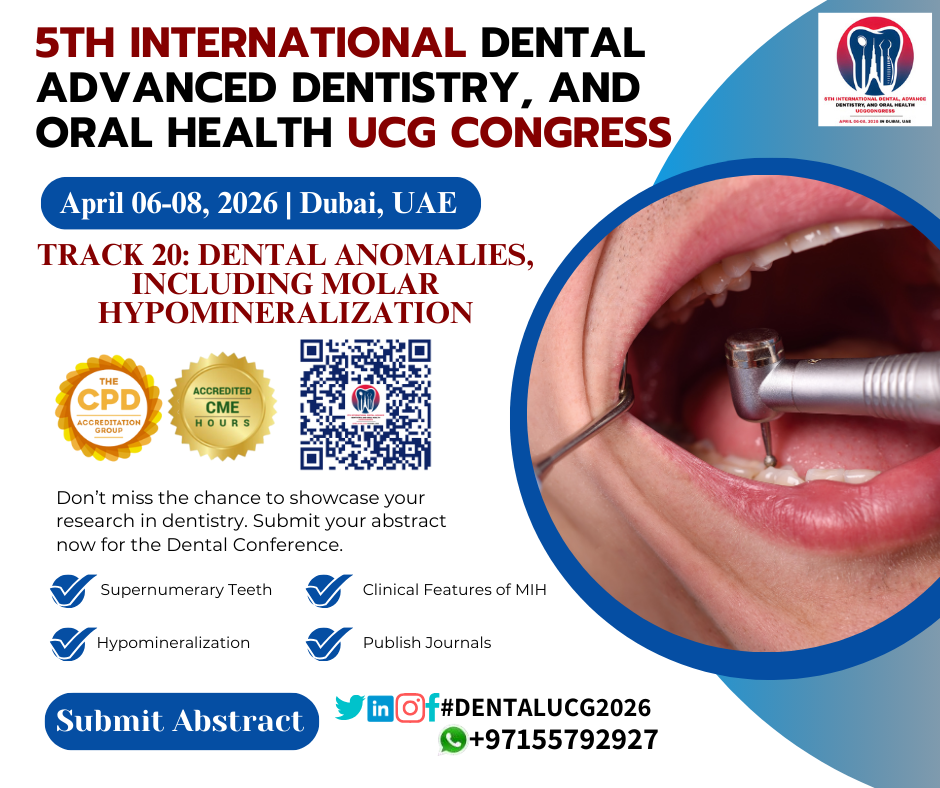Dental Anomalies Including Molar Hypo mineralization: Identification, Causes, and Management
Dental anomalies refer to deviations from normal dental development, affecting the number, size, shape, structure, or position of teeth. These conditions may be congenital (genetic) or acquired (environmental) and often require early detection and tailored management to ensure optimal function and aesthetics.
Common Types of Dental Anomalies
Hypodontia – Congenital absence of one or more teeth
Hyperdontia – Presence of extra (supernumerary) teeth
Amelogenesis Imperfecta – Hereditary enamel defect
Dentinogenesis Imperfecta – Genetic disorder affecting dentin
Taurodontism – Enlarged pulp chambers in molars
Fusion and Gemination – Abnormal joining or duplication of teeth
Microdontia / Macrodontia – Unusually small or large teeth
Peg-shaped Lateral Incisors – Conical lateral incisors
Ectopic Eruption – Tooth eruption in abnormal positions
Transposition – Switching of normal tooth positions
Molar Hypo mineralization (MIH)
What is MIH?
Molar-Incisor Hypo mineralization (MIH) is a developmental condition of systemic origin affecting one or more of the first permanent molars and often permanent incisors. Affected teeth have soft, porous enamel, making them prone to breakdown, sensitivity, and decay.
Clinical Features of MIH
Demarcated white, yellow, or brown opacities
Posteruptive enamel breakdown (PEB)
Hypersensitivity to temperature or brushing
Rapid caries development in affected areas
Difficulty in achieving effective anesthesia during treatment
Behavioral problems due to chronic discomfort
Causes of MIH
Environmental insults during enamel formation (birth to 3 years)
Childhood illnesses, especially high fever, respiratory infections
Use of antibiotics, especially amoxicillin
Prenatal factors: maternal illness, vitamin D deficiency
Genetic susceptibility may also play a role
Diagnosis
Diagnosis is clinical, based on:
The presence of demarcated opacities
Posteruptive enamel loss
Atypical restorations in first molars
Extraction of severely affected molars may be considered around age 8–10
Management Strategies for MIH
Preventive Care
Fluoride varnishes and remineralizing agents (e.g., CPP-ACP)
Desensitizing toothpaste
Regular monitoring and hygiene reinforcement
Restorative Treatment
Glass ionomer cement for interim restorations
Stainless steel crowns for severely damaged molars
Composite resins or preformed crowns for anterior teeth
Extraction of poor-prognosis molars with orthodontic planning
Behavioral Support
Importance of Early Diagnosis
Early recognition of MIH and other dental anomalies allows:
Timely intervention to reduce discomfort
Better long-term functional and aesthetic outcomes
Coordination with orthodontists and pediatricians for comprehensive care
Conclusion:
Dental anomalies, particularly Molar Hypo mineralization, present significant challenges in pediatric dentistry. Understanding their clinical presentation, etiology, and management is crucial for improving patient outcomes. With early detection and a multidisciplinary approach, we can ensure healthier, happier smiles for affected individuals.





